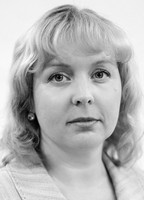Morphofunctional indices in girls with different levels of motor activity: comparative analysis
Фотографии:
ˑ:
Teoriya i praktika fizicheskoy kultury №6 2017, pp.54-56
Associate professor, PhD O.S. Krasnikova1
Associate professor, PhD L.G. Pashchenko1
1Nizhnevartovsk State University, Nizhnevartovsk
The article presents the results of a study of morphofunctional indices in female university students with different weekly volume of motor activity. The girls were divided into four groups: 1 – female university athletes, 2 – female students with the average of above average health level, engaged in a certain health-improving activity, 3 – female students with the below average and low health level, who were also engaged in the extra-curricular health-improving physical activity, 4 – female students, whose motor mode was limited to the academic physical education classes.
The study found the best physical health indices in qualified female university athletes and their peers, who, besides the compulsory physical education classes, were engaged in a certain kind of health-improving activities. Low rates were found in the female students with the low health level, whose motor mode was expanded by one or another kind of health-improving physical activity. Moreover, the presence of high motivation of the latter for self-improvement and solving the tasks of health improvement requires the development and implementation of science-based methodological approaches to selection of kind, mode and content of their motor activity. To improve the morphofunctional indices of the students, whose weekly motor mode is limited to the compulsory physical education classes, it is necessary to choose such means and methods of physical education that would enable not only to achieve a health-improving effect, but also motivate students for expanding their motor activity. The detected differences stipulate a differentiated approach to the organization and maintenance of the compulsory academic and extra-curricular forms of physical education of female students.
Keywords: girls, motor activity, morphological indices, functional indices, component composition of body.
References
- Doklad o razvitii massovogo sporta i fizicheskogo vospitaniya naseleniya (mart 2014) [Report on development of mass sports and physical education of the population (March 2014)]. 2014, 182 p.
- Ivanovskaya T.V. Optimizatsiya uchebnogo protsessa v institute fizicheskoy kultury na osnove monitoringa sostoyaniya zdorovya, funktsionalnogo i fizicheskogo statusa studentov. Avtoref. dis. kand. ped. nauk [Optimization of educational process in institute of physical culture based on monitoring of students' health, functional and physical statuses. PhD diss. abstract]. Rostov-on-D., 2003, 27 p.
- Korichko A.V., Pashchenko L.G., Pogonysheva I.A. Somatotipologicheskaya kharakteristika devushek Khanty-Mansiyskogo avtonomnogo okruga – Yugry [Somatotypological characteristics of girls of KhantyMansi Autonomous District Yugra]. Teoriya i praktika fizicheskoy kultury, 2015, no. 12, pp. 40-42.
- Minibaeva E.D., Vasileva A.G. Razrabotka metodiki opredeleniya i otsenki sformirovannosti urovnya dvigatelnoy aktivnosti studenta tekhnicheskogo vuza [Development of methods for determining and assessing motor activity level in technical university students]. Sovremennye problemy nauki i obrazovaniya, 2014, no. 3, pp. 239-246.
- Pashchenko L.G. Motivy zanyatiy fizkulturno-ozdorovitelnoy deyatelnostyu u lits yunosheskogo i zrelogo vozrasta v sravnitelnom aspekte [Motives for health and fitness activities in adolescents and seniors: comparative aspect]. Vestnik Nizhnevartovskogo gosudarstvennogo universiteta, 2016, no. 4, pp.78-83.
- Pashchenko L.G. Proyavlenie motivov zanyatiy fizicheskoy kulturoy i sportom u studentov vuza s razlichnoy dvigatelnoy aktivnostyu [Display of motives for physical training and sports in university students with different motor activity]. Sovremennye nauchnye issledovaniya i innovatsii. 2016. no. 5 (61), pp. 355-359.
- Global recommendations on physical activity for Health Organization, 2010. 60 p.



 Журнал "THEORY AND PRACTICE
Журнал "THEORY AND PRACTICE